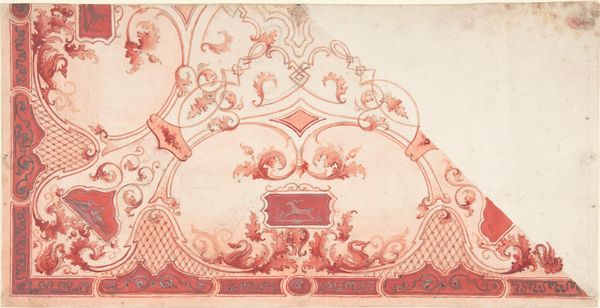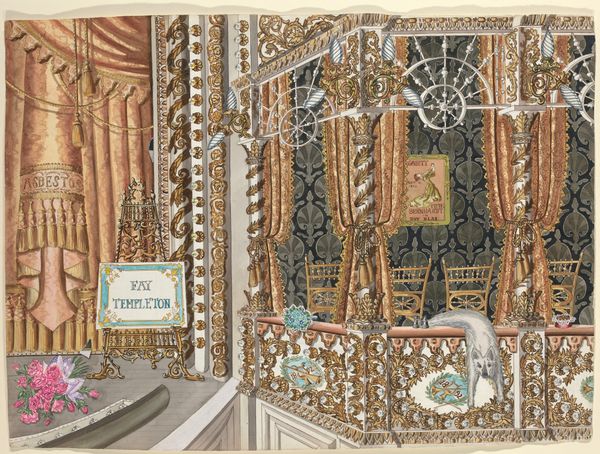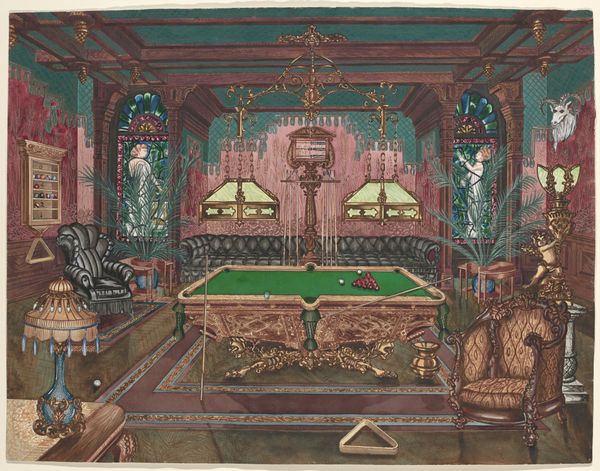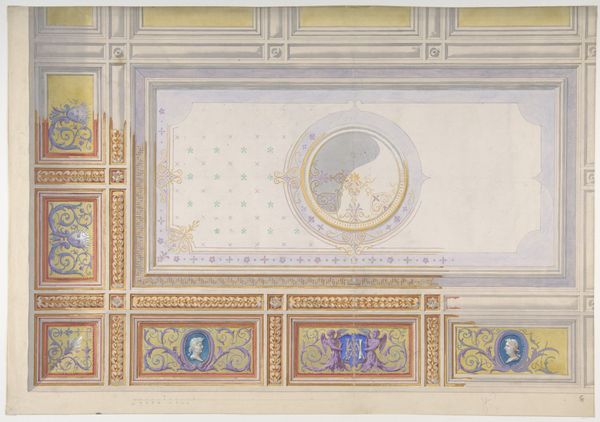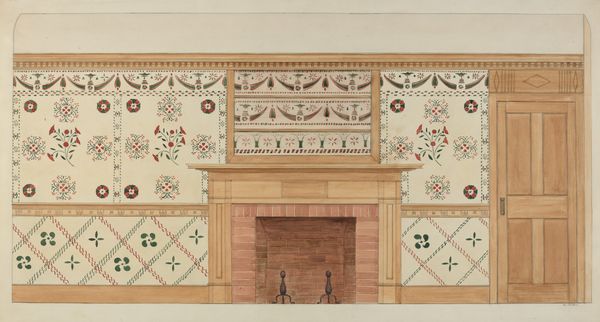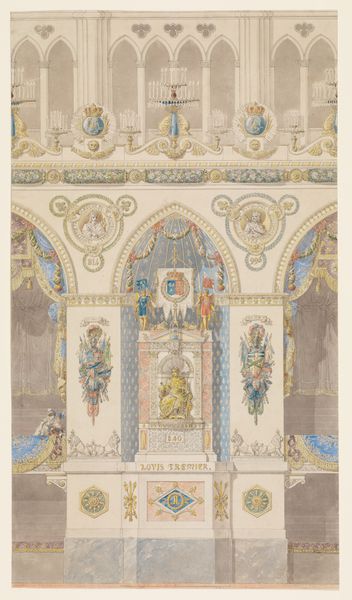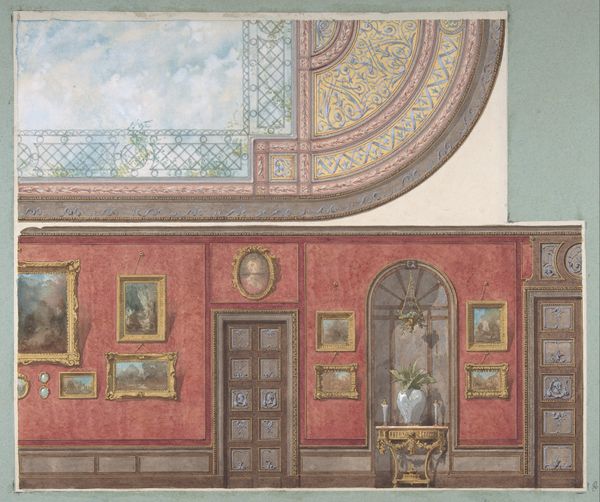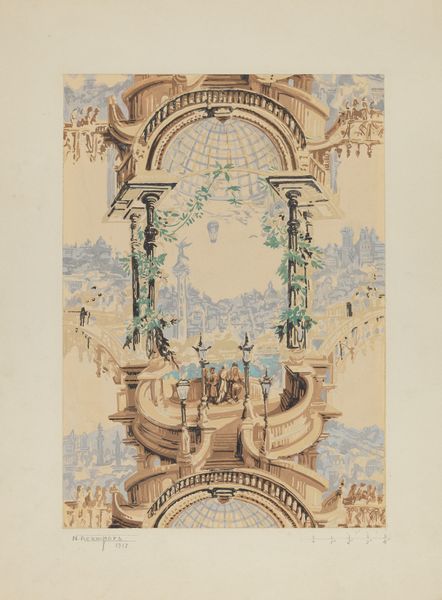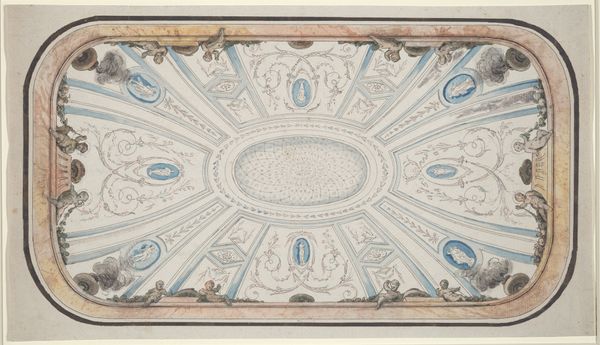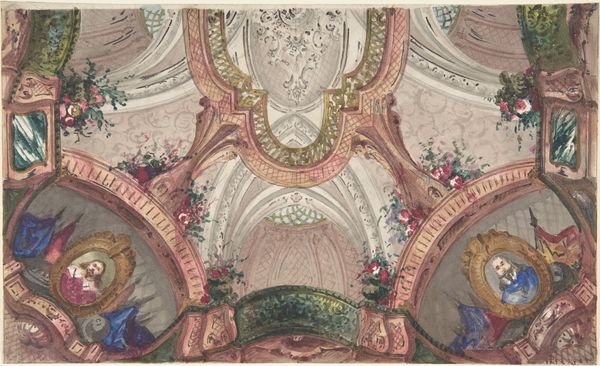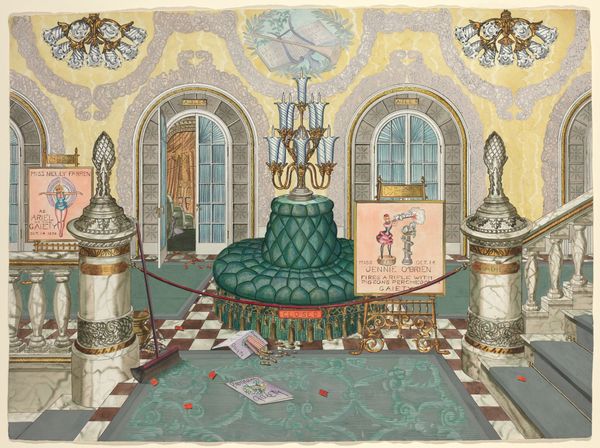
drawing, watercolor, architecture
#
drawing
#
water colours
#
traditional architecture
#
watercolor
#
genre-painting
#
watercolor
#
architecture
Dimensions: overall: 56.9 x 78.1 cm (22 3/8 x 30 3/4 in.)
Copyright: National Gallery of Art: CC0 1.0
Curator: Hans Westendorff's "Soda Fountain," likely created between 1935 and 1942, presents a fantastical interior scene rendered in watercolor. The attention to detail is quite remarkable. Editor: My first thought is that it feels like a stage set. Everything is meticulously arranged, and the lighting gives it a very dreamlike quality. Curator: Exactly! Consider the historical context. This was during the Depression era; soda fountains were accessible places of luxury for many. Westendorff transforms this into something bordering on the surreal. Editor: It's hard to ignore the ornamental flourishes—the sphinx-like figures, the intricate arches, even the stylized bodies seemingly holding up display shelves. There’s an embrace of the absurd here. I wonder how much of this decadence reflected the lived realities of people in that time? Curator: It’s a deliberate exaggeration, I think, speaking to broader themes of aspiration and escapism. It invites questions about who had access to such spaces. Remember that art deco motifs often signaled progress but were largely accessible to white patrons. Editor: Yes, looking closely, this feels staged for a very specific gaze. There is an aspirational performance in this space that demands a critical awareness of how art, even in its imagined form, reinforces existing social dynamics. The architectural drawing, with all its elegance, leaves me wondering who’s actually invited to sit at the table. Curator: And Westendorff, an architect and designer, likely was engaging with prevailing styles while creating his own utopian vision. Perhaps critiquing or endorsing, depending on your read. His biography gives us a hint; a man working to depict modernity, while in parallel, architecture shifted and democratized access. Editor: Precisely, so how does Westendorff’s vision intersect with—or perhaps stand in contradiction to—the move towards inclusivity in architecture at that time? Perhaps its escapism offered temporary relief while actively resisting change. Curator: Ultimately, it provides us an opportunity to contemplate what lies beneath its carefully arranged surface: an imagined utopia, burdened perhaps by inherent biases of its own creation. Editor: Yes, exactly, this watercolor pushes me to challenge whose visions shape the narratives reflected back at us and encourages us to question how spaces and aspirations were, and continue to be, conceived.
Comments
No comments
Be the first to comment and join the conversation on the ultimate creative platform.
